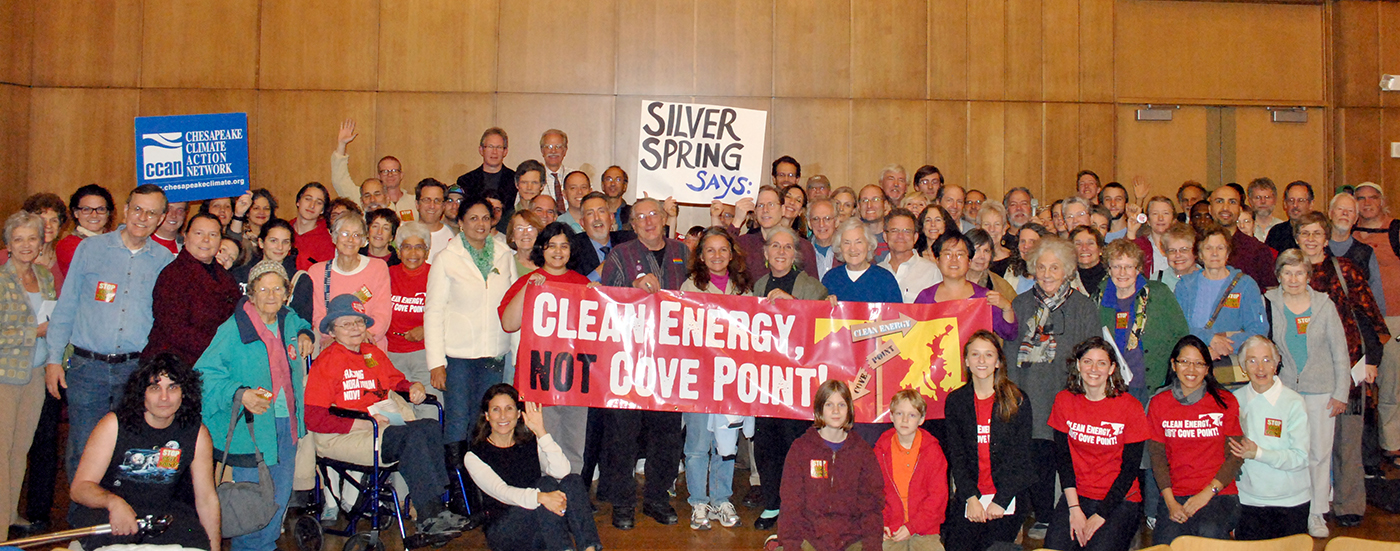While they’re in town this week (May 7th), Dominion officials and shareholders should stop by Cleveland’s Grdina Park.
That playground marks where three shiny spheres and a giant cylinder once held millions of gallons of liquefied natural gas (LNG). They were a technological wonder in 1944, because 600 times more natural gas could be stored when liquefied at minus 260 degrees F.
But on Oct. 20, 1944, a spark ignited gas vapor seeping from one of the tanks, unleashing a fiery explosion. Homes along 61st and 62nd streets burst into flames, trapping residents. The gas flowed into the sewer system, launching manhole covers, bursting pavement, rushing into basements. Numerous blasts and waves of blistering heat shattered windows miles away. Telephone poles smoked and bent, grass caught fire, walls turned red, people’s shoes felt as if they were melting.
 The East Ohio Gas Co. disaster left 131 people dead and hundreds injured. It destroyed a square mile of Cleveland’s east side, including 79 homes, two factories, 217 cars, seven trailers and a tractor. Nearly half the victims, including 21 never identified, are buried at Highland Park Cemetery on Chagrin Boulevard, where a monument honors the dead. If children had not been in school, the toll would have been much higher. After the disaster, public utilities started storing natural gas underground, in depleted wells, rather than as potential bombs in aboveground tanks.
The East Ohio Gas Co. disaster left 131 people dead and hundreds injured. It destroyed a square mile of Cleveland’s east side, including 79 homes, two factories, 217 cars, seven trailers and a tractor. Nearly half the victims, including 21 never identified, are buried at Highland Park Cemetery on Chagrin Boulevard, where a monument honors the dead. If children had not been in school, the toll would have been much higher. After the disaster, public utilities started storing natural gas underground, in depleted wells, rather than as potential bombs in aboveground tanks.
This week, on May 7th, less than four miles from Grdina Park, Dominion shareholders will consider dazzling CEO compensation packages and lucrative projects, including the proposed Cove Point LNG export plant in the Chesapeake Bay community of Lusby, Maryland. This $3.8 billion facility would liquefy fracked gas, pump it onto tankers and ship it to Asia.
But fears about explosions, thermal blasts, and limited escape routes dominate the debate. This facility, if approved, would once again place LNG tanks and much more next to too many people.
Opponents have raised numerous objections. The facility would ensure more fracking, compressor stations and pipelines. Exports would also raise prices for American consumers and manufacturers. A U.S. Department of Energy report shows that exporting gas harms every sector of the economy save one: the gas industry. And all that fracking, piping, compressing, chilling, shipping and re-gasifying is a climate nightmare.
But the most poignant alarms are from Lusby residents who live nearby. So near, in fact, that 360 homes are within a 4,500-foot radius. A vapor cloud, according to a state report on an earlier expansion, could drift nearly that far and still ignite — with a spark from a car, a lighter, a grill — enveloping all in a flash fire. Which sounds too much like Cleveland 1944. The nearest homes are 850 feet away. Confusion is widespread about a 60-foot-tall, three-quarter-mile-long wall around the site. Dominion calls it a sound b arrier; documents suggest it would also serve as a vapor barrier; and company officials recently told residents that flames from an explosion could travel up the wall and, thereby, over the houses.
arrier; documents suggest it would also serve as a vapor barrier; and company officials recently told residents that flames from an explosion could travel up the wall and, thereby, over the houses.
The unusual design, confined to the footprint of the existing and dormant import facility, means Dominion has to cram into tight quarters a utility-scale power plant, compressors and liquefaction equipment, and storage tanks for gases and toxic chemicals. Even minor accidents could escalate into a catastrophe. And 1,000-foot tankers would frequently lumber out of port with their explosive load.
Dominion insists accidents won’t happen. But residents have read with growing anxiety about the deadly 2004 explosion at an LNG export facility in Algeria, and more recent blasts at gas-processing plants in Washington, Wyoming and at Dominion’s Blue Racer in West Virginia.
In April, the local assistant fire chief resigned over concerns that his all-volunteer department lacks the staff, training and equipment to handle a disaster at the plant.
Despite all the hazards and questions, the Federal Energy Regulatory Commission is sticking to its lighter-weight environmental review and plans only one public hearing. The Obama administration even wants fast-track approvals for gas export facilities as another hammer in the geopolitical toolbox to use against Russia. Dominion will tell shareholders that Cove Point fits well with this nationwide rush to export gas.
Ideally, we would weigh the long-term effects of fracking and exporting on gas prices, our health, foreign policy, the climate. At the least, though, the explosion in Cleveland nearly 70 years ago teaches that LNG facilities have no place near homes and schools, playgrounds and parks, beaches and fishing docks. If they belong anywhere, and that is not a given, they belong in remote areas, not next to neighborhoods.



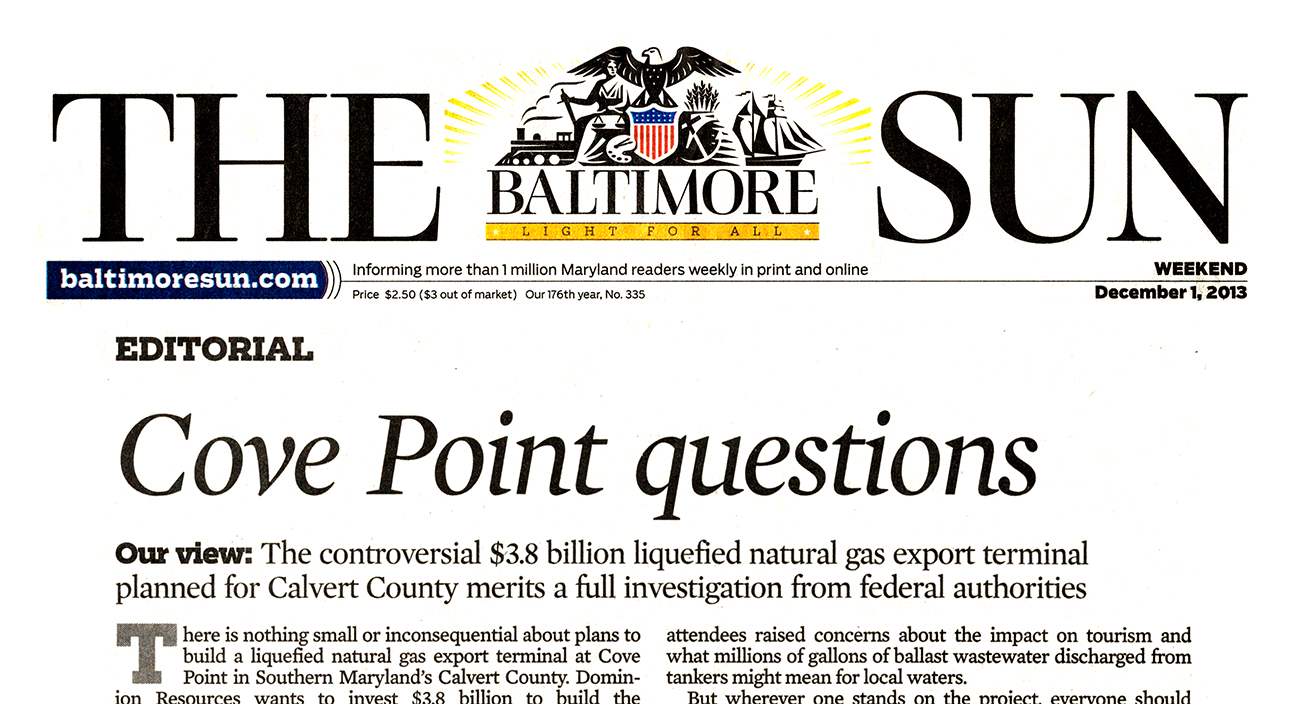
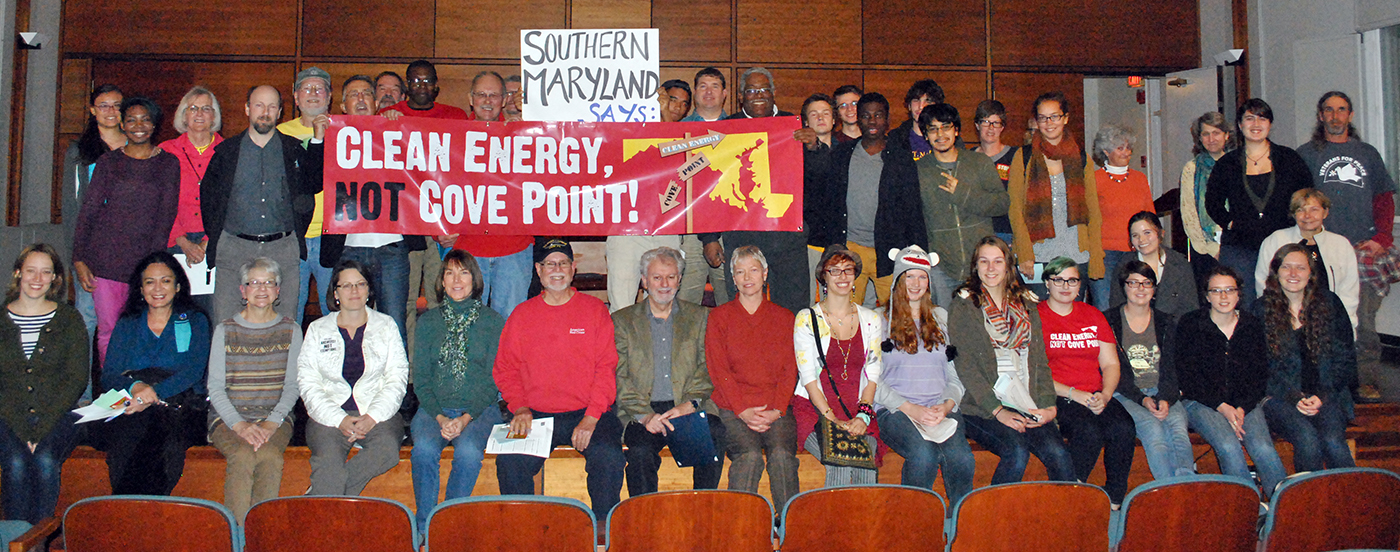
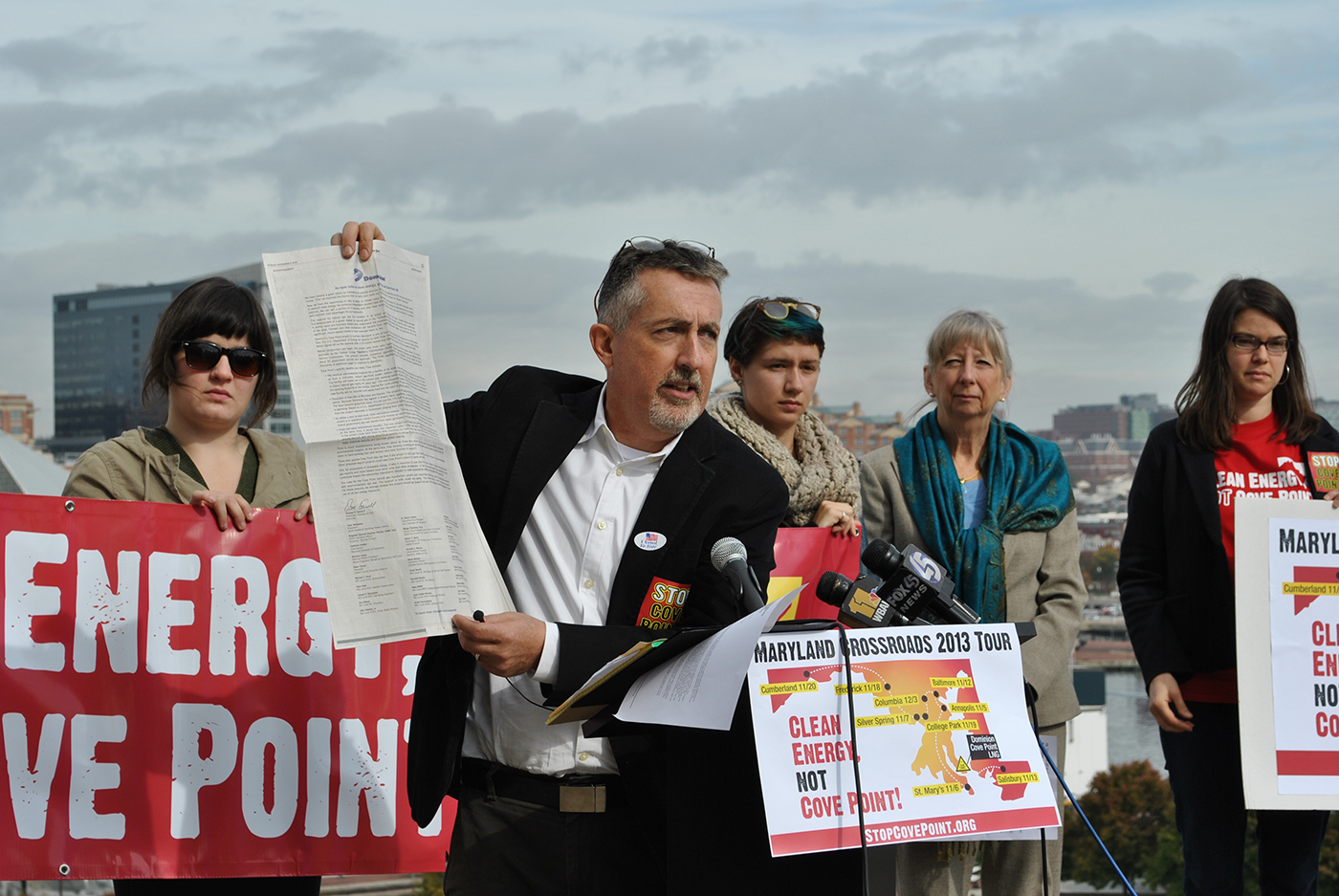

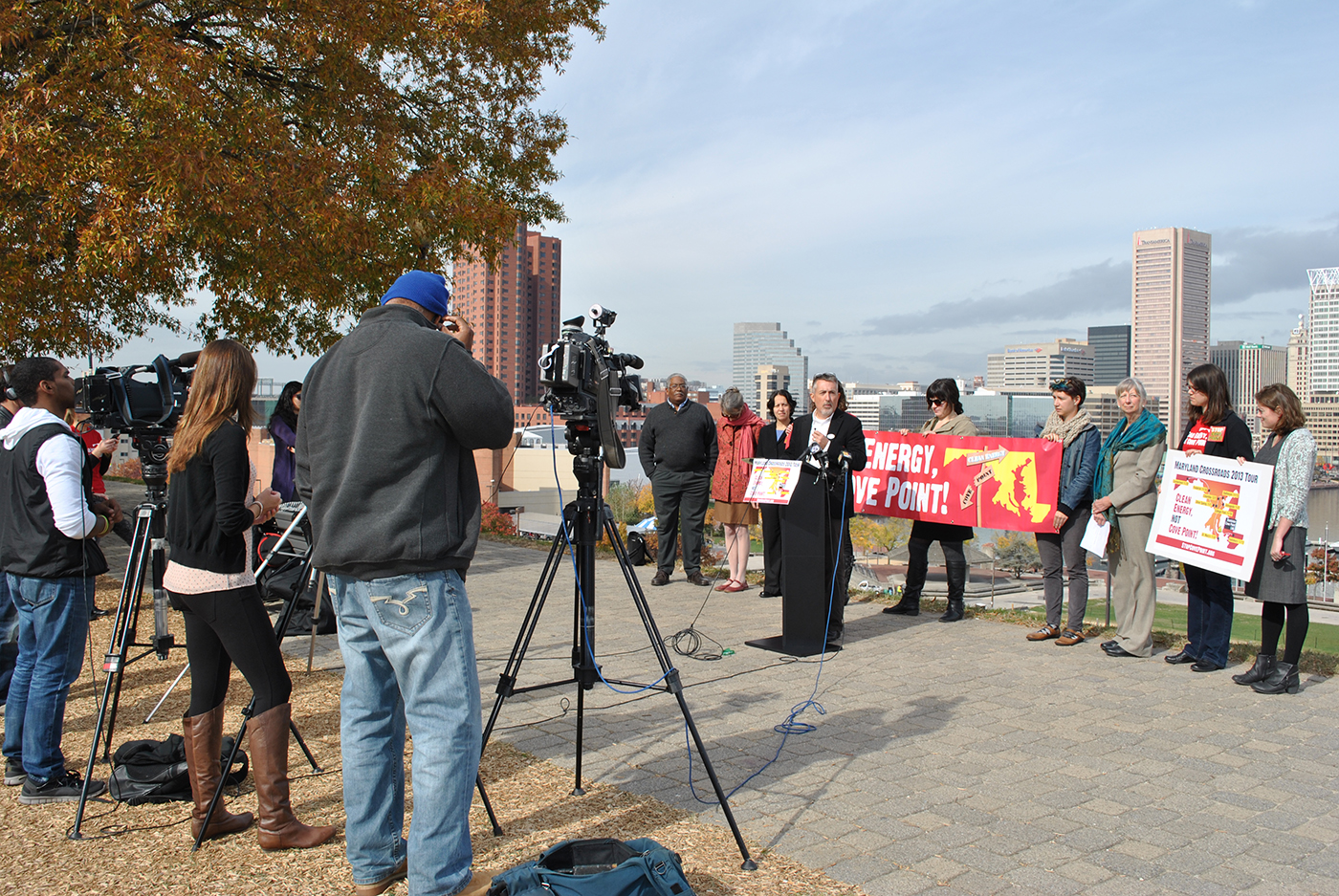
 Or maybe they find out the stark truths hidden behind the fancy news releases about jobs (not so many permanent ones) and tax revenue (minus some hefty tax giveaways). After a news conference called by a Chesapeake Climate Action Network (CCAN)-led coalition in September, regional media have been waking up to Calvert County as ground zero in this scheme. And residents of Lusby, who live closest to the planned facility, are making their voices heard. So far, coverage of the
Or maybe they find out the stark truths hidden behind the fancy news releases about jobs (not so many permanent ones) and tax revenue (minus some hefty tax giveaways). After a news conference called by a Chesapeake Climate Action Network (CCAN)-led coalition in September, regional media have been waking up to Calvert County as ground zero in this scheme. And residents of Lusby, who live closest to the planned facility, are making their voices heard. So far, coverage of the 